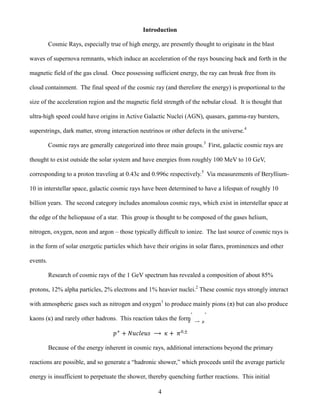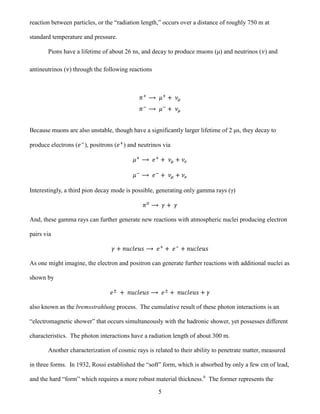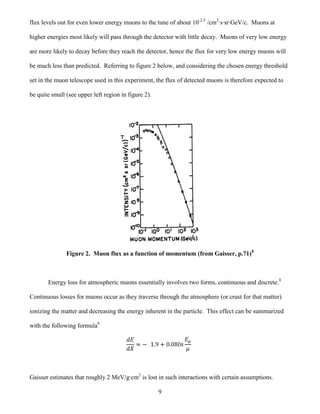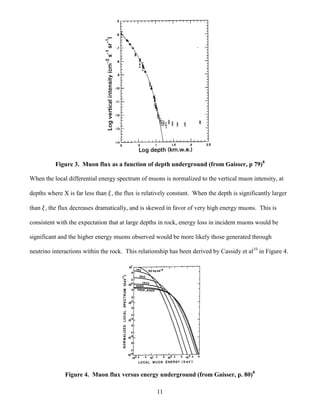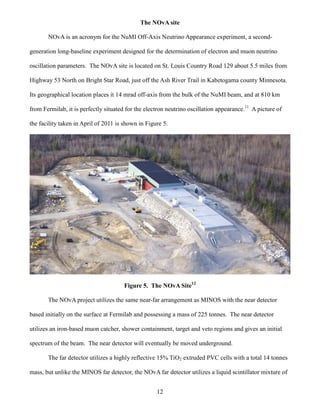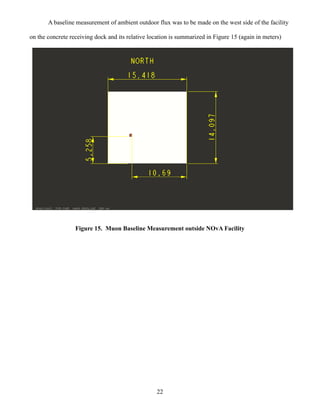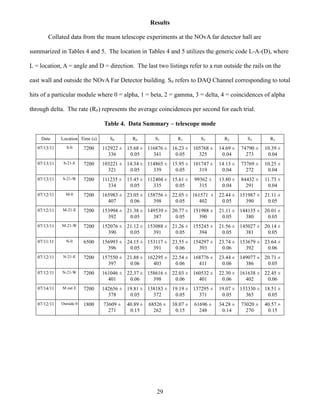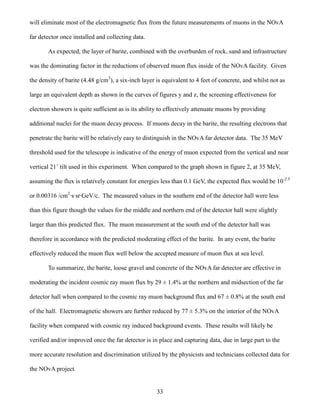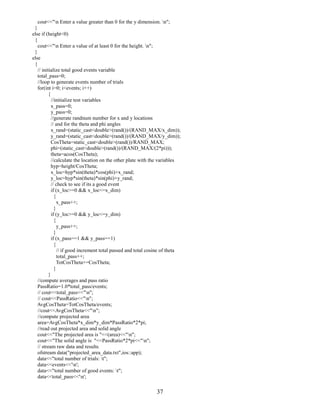This document summarizes the history of cosmic ray research from the early 1900s to present day. It describes key early experiments measuring ionization at different altitudes that helped establish cosmic rays originate outside Earth's atmosphere. It then discusses subsequent discoveries like pions, muons and air shower cascades. The document outlines current understanding of cosmic ray sources and composition. It also explains energy loss mechanisms and interactions of cosmic rays in the atmosphere that produce air showers of particles detected at Earth's surface.



